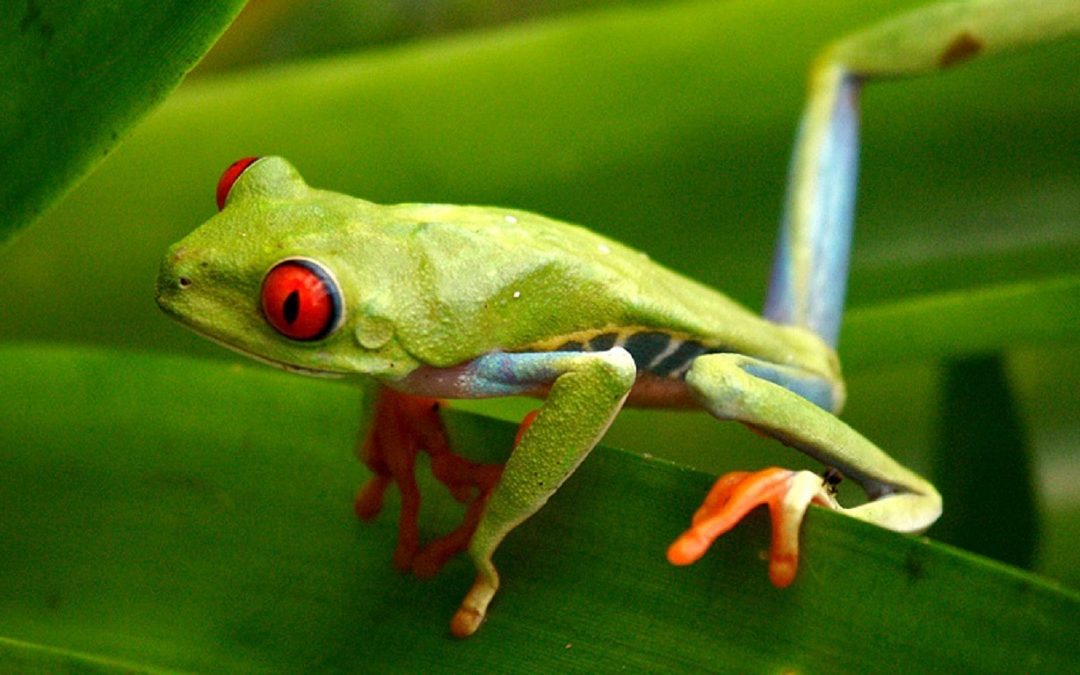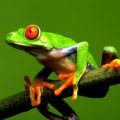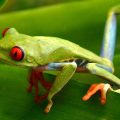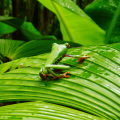Table of Contents
When it comes to setting up the red – eyed tree frog habitat for a standard adult Red-eyed Tree Frog; a 20-38 gallon tank with lots of vertical space is generally considered sufficient. It should be able to house as many as 3-4 frogs. A good example of red – eyed tree frog habitat is a standard terrarium of this size. It should support a small community of these communal species. The larger the better is a good rule. Especially since you will likely want to add more frogs after some time. In this article, you’ll learn how to set – up a red – eyed tree frog habitat.
Standard all-glass reptile tanks or terrariums are ideal. They are able to retain heat and humidity, while a secure screen top will allow for proper ventilation and any suitable light fixtures.
Temperature, Lighting and Humidity Requirements
Optimal temperatures for the Red-eyed Tree Frogs range from 78-84 F, without exceeding the mid-80s. At night, this can drop to around 67 degrees. Though slightly warmer nighttime temperatures are recommended for smaller or younger frogs.
During the warmer parts of the year, no supplemental heating source may be needed. During the colder months, however, when temperatures begin to drop, low wattage heat bulbs, heating pads, or even red or nocturnal bulbs can provide additional sources of heat that are gentle enough without being excessively drying. Always place artificial heat sources outside the tank – not only does this prevent the frog from accidentally being burned by touching the bulb, it also allows the frog to regulate its own temperature by moving closer or nearer the heat source as it needs.
Lighting Requirements
Unlike with many reptiles, it isn’t really necessary to provide lighting for your frogs, but UVB lighting can provide some benefits. These provide needed light for both the frogs and the plants within the tank to ensure optimal growth and development. In addition, some light can help you appreciate these species more by making your viewing easier. Keep any light source on a day/night cycle of at least 14 hours in the summer and eight hours in the winter.
Humidity levels should be kept at moderate to high, with care being taken that the environment does not become soggy or damp. Tropical rainforest environments usually alternative from high humidity to periods of dryness which prevents too much sogginess that can be a breeding ground for bacteria. Too much damp is not good for amphibians because they are extremely susceptible to infections resulting from an unhealthy or contaminated habitat. These alternating periods of dryness and humidity can be replicated by devising a misting schedule which allows the frog’s habitat periods of humidity interspersed with periods of necessary dryness.
Other Habitat Tips
In general, heavy spraying or misting at least twice daily is sufficient to keep the habitat at humidity levels of 70-90%. Automated misting systems can also be used to maintain the necessary humidity levels even when you are away and unable to mist the cage yourself. An automatic mister or fogger would be suitable. Just make sure that the habitat has adequate ventilation with enough fresh air coming in to prevent the development of any fungus or bacteria.






 Author and long-time animal lover. Sharing knowledge on pet care through experience and the written word.
Author and long-time animal lover. Sharing knowledge on pet care through experience and the written word.